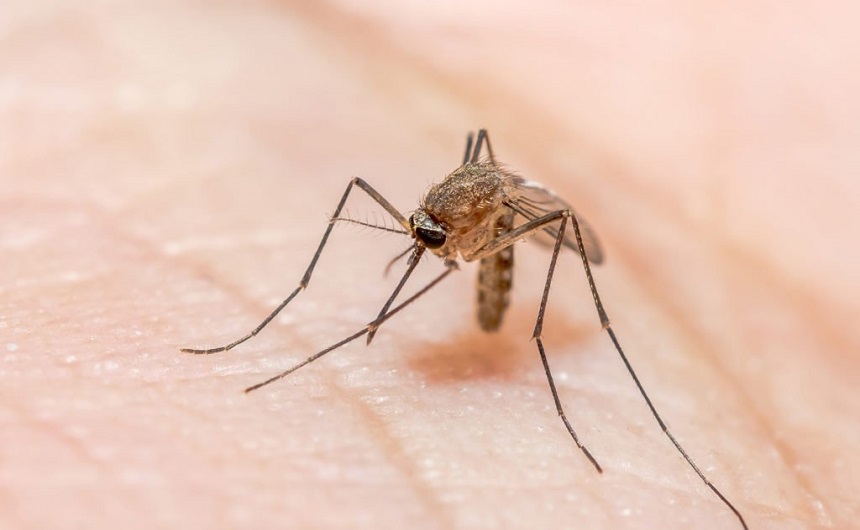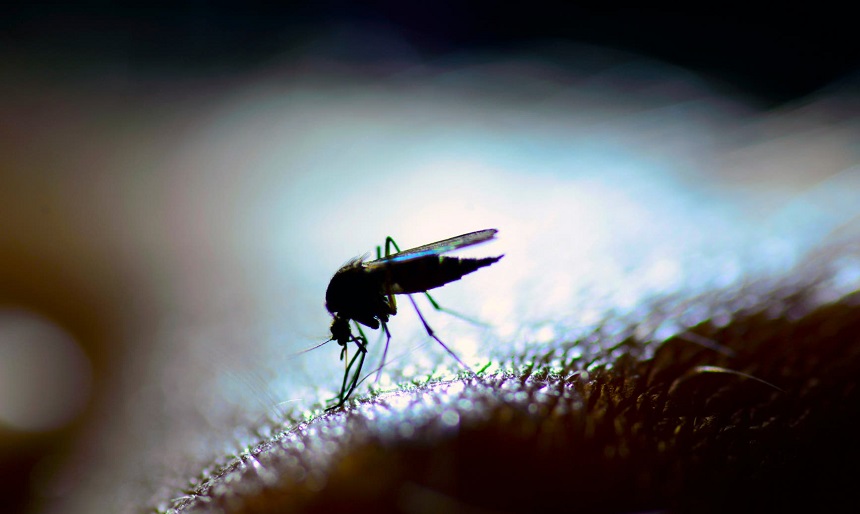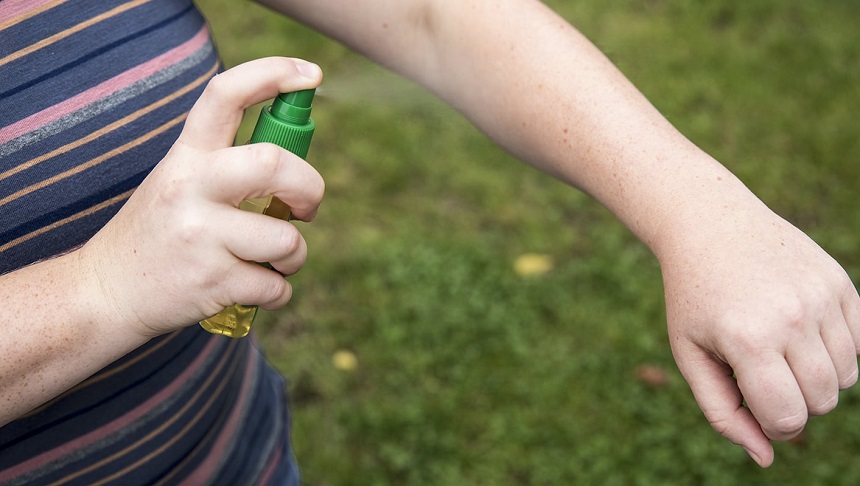

We know that mosquitoes prefer warmth and moisture over any other environment. But what about certain seasons or certain times of day that they are more likely to be out and about? Have you ever wondered when are mosquitoes most active?
If you live in a climate where you deal with a lot of mosquitoes, it’s a good idea to be aware of when you are likely to have to deal with them the most. This includes hours or seasons. Understanding their most active times allows you to better prepare and protect your home or family from mosquitoes that can carry diseases.
In this guide, we break it down for you when they are most active. We even break it out by seasons or the state that you might live in. Keep reading to learn more!
If we’re being technical, there isn’t necessarily a specific season that applies to mosquitoes. That being said, they don’t like cold weather. In some areas, mosquitoes might stick around all year long because the temperatures are plenty warm enough to sustain them.
However, in other areas, mosquitoes might go into hibernation completely during the cold months because they simply don’t tolerate the cold. It all boils down to the type of mosquito. The general rule of thumb is that if temperatures are consistently below 45 degrees Fahrenheit, mosquitoes go into hibernation until warmer weather arrives.
The warmer weather that prompts hatching or the return of mosquitoes is anything consistently over 45 degrees and they really become a problem when you start seeing 80+ degree temperatures.

Aedes mosquitoes can be very dangerous and are known for carrying yellow fever. They are not kind or gentle and they can be very aggressive without provocation. They bite and their bites hurt. These mosquitoes are most known for being around floodwaters. They are most active throughout the day. They definitely like mornings.
Most of the time by nightfall, they are long gone. Try protecting your property from these nasty pests with the best mosquito killer sprays to keep them at bay.

The Culex Pipien species of mosquitoes is one of the most common species out there. These are your everyday mosquitoes that commonly find their way around, particularly in the United States. These are often referred to as house mosquitoes.
This type of mosquito is more likely to be active or bite in the evening time. They will be out when you’re hanging out in the evenings, heading to summertime gatherings, or out late at night. While you’re out, you could set up tiki torches to help keep these nasty pests away.
Try using a torch fuel that repels mosquitoes just like these best tiki torch fuels for mosquitoes.

The Anopheles mosquito is another species that can have some very negative health impacts. They are the species that are most likely to carry diseases like malaria. This mosquito lives almost exclusively in or around water, preferably stagnant water.
The challenge to this type of mosquito is that there is still more than one type within the species, and they don’t all act or live the same way. These mosquitoes could be a risk at any time or day night as some of the types are active throughout the day and others are most active at nighttime.
However, in most cases, their patterns are very similar to Culex mosquitoes so your biggest risks are close to dusk and overnight. If you have any type of water space on or around your property that could invite these creatures in, you might try something like these mosquito pellets to keep them at bay or get rid of them.
The time that mosquitoes are most active will primarily depend on your location and the type of mosquitoes in your area. Here, we will break it down for you to further determine the timeframes. A good rule of thumb is that the biggest risk for mosquito activities and bites is evening time, through the night, and right around dawn. While mosquitoes might be active during the day, they are less likely to be biting or where you are in that timeframe.
Remember that there are around 200 species of mosquitoes in the United States alone. When you look beyond the US, you find that there are almost 3,000 different species throughout the entire world. This makes it impossible to give you a specific denotation of when mosquitoes may or may not be active.
When they are active depends on the species. For example, the Culex species we mentioned above are active during the day but more likely to bite at dusk and through the night. And the Aedes species actually is more likely to bite throughout the day.
However, even mosquitoes that are most active during the day tend to be more active in the morning or late afternoon hours.

Some mosquitoes are very active at night. If we’re being honest, this is the timeframe that mosquitoes are more likely to be active and biting. We would say that the majority of mosquitoes are most active in the evening and through the night.
While mosquitoes might be active during the day, they are rarely out seeking food so they are less likely to be biting during the day. They hang out in shady or wet spaces instead during those hours. However, the reason they bite so much more at night is that there is much easier access to feeding then.
A mosquito active at night just hangs out until they get the sustenance they need and then they go to bed to do it all again the next day.
Mosquitoes can be found all over the world. There are very few places that won’t have them. They do tend to stick to lower elevations, although they are capable of flying higher. In addition, they also prefer warmth and moisture. For that reason, they might be more prominent or noticeable in places with heat and humidity.
Mosquitoes do hibernate so they will live in places that get warm but hide away if they experience a cold spell. Places like Florida or Australia which rarely see really cold weather will see more mosquitoes and more seasons as well.
Let’s look at the patterns of some specific locations.
Texas is a state that has hot summers and can often experience quite a bit of rain throughout the year, particularly in rainy seasons. The combination of moisture and heat lead to prime locations for mosquitoes to reside.
Texas does have a winter season that gets pretty cold in some areas. With that in mind, most of Texas will be plagued by mosquitoes throughout May through August, with the prime times being June and July.
As far as the time of day to be mindful of, Texas will likely see mosquitoes in the early mornings or late afternoon and into the night.
The time that you see mosquitoes in Florida will vary because different parts of the state have different temperatures. However, the majority of Florida is known for heat and humidity a good part of the year. The northern areas are more likely to experience cold seasons or colder temps.
In the Southern areas, you might see mosquitoes all year long in some of the rainiest or warm places. The peak times for mosquitoes through most of the state happen when the rainy season approaches, and that begins in March. Prime mosquito seasons range from about March through August in most of Florida.
If you live in or want to vacation in Florida, you could use something like this pop-up netted tent to protect you when you’re soaking up the sun.
Wisconsin gets warm in the late summer months but has very cold winters. The winters are sure to drive mosquitoes into hibernation. The season here for mosquitoes is fairly short because the heat doesn’t come in until late in May and it goes out quickly too. The mosquitoes are more attracted to Wisconsin because they do get a lot of moisture.
That includes the accumulation of moisture from winter snows that give them places to thrive when they come out of hibernation. The mosquitoes are most active in Wisconsin from the end of May to the end of August or into early September.
Australia does experience a summer season and while they do get a cold season, it usually stays fairly warm all year long. They have an expanded season for mosquitoes because of their heat but also from their long rainy season with high humidity levels.
Mosquitoes will breed throughout both spring and fall in Australia. They are most active in pestering people or biting people throughout the summer months. They have little need to hibernate here and if they do, it’s not long. This is why there are a lot of mosquitoes in that region.
The thing that you can almost always depend on with mosquitoes is that they like moisture and heat. They will tend to be more active in locations or seasons when there is a lot of rain, humidity, and higher temperatures.
When the weather outside is muggy or hot, you’re going to see more mosquitoes. The weather they like is sunlight or rain with temperatures that fall somewhere between 65 and 95 degrees. Whether it’s the season or the time of day, this is when mosquitoes are most active.
Days that get really warm but don’t cool way down at night are prime examples. This falls most often in the summer months. The mosquitoes hang out in their water or shade during the heat of the day but stay active as the sun moves and temperatures drop but stay hot.
If there has been a lot of rain, this also prompts mosquitoes into action it seems.

The good news is that there are several things you can do to prepare for mosquito season. We’ve shared several tactics throughout this guide, including using pellets in stagnant water locations and spraying around the perimeter of your home and property.
These are preparation tasks but something you can also do if you start to notice what seems like a major influx of mosquitoes around your home. You can even bring in professional mosquito spraying services if it gets really bad.
There is a multitude of steps that you can take knowing that mosquito season is happening. For most people, mosquito season will come up when you are nearing warm temperatures and rainy seasons.
To prepare try these things.
Protecting your home is important. While you likely cannot completely eradicate mosquitoes, you can take steps to protect your home and your family. We encourage you to take a look at some of the sprays, pellets, and repellent products that we’ve shared here. These are simple DIY things that you can quickly apply.
If you’re traveling, be sure you have appropriate vaccinations and that you avoid mosquito season if possible. If you notice mosquitoes, use indoor mosquito killers to keep them at bay and protect your home.
You can’t always predict when you’re going to see a mosquito but you can familiarize yourself with normal patterns and understand when the risks will be at their highest. In answering the question of when are mosquitoes most active, the answer isn’t simple. However, we find that evening and early morning seem to be the most likely time to get bit.
Keep in mind mosquitoes like warmth, humidity, and moisture so the seasons that have those temperaments are the seasons you will most likely experience an uptick in mosquitoes. Be proactive with quality solutions or have a professional spray around your property. Take action to protect your home and family during these times.